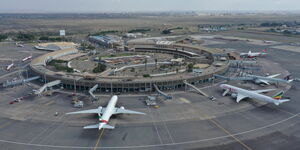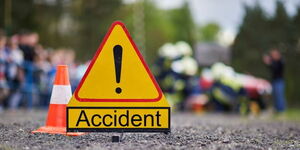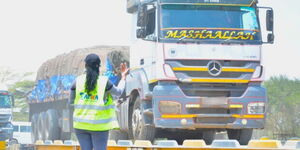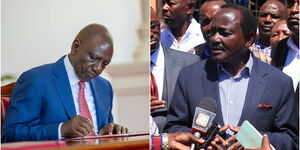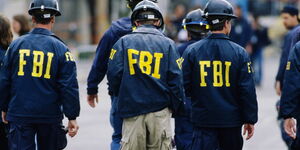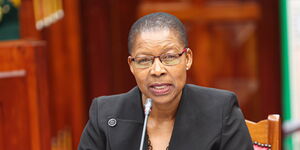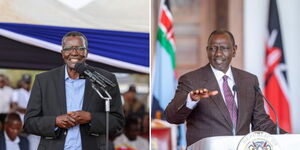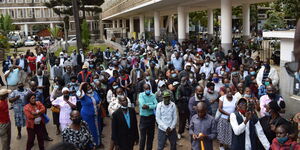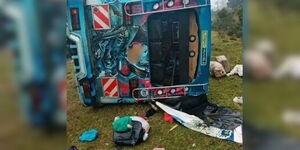Moja Expressway Company, the firm charged with the administrative work of operating and maintaining the Nairobi Expressway, has detailed safety precautions motorists using the road should observe when it opens to the public.
The speed limit for motorists using the 27-kilometer road has been capped at 80km/h and racing will be treated as a traffic offense punishable by the law.
"The Expressway design speed is 80km/h, so you will be required to drive at the prescribed speed limit shown by the traffic signs along the expressway. It is illegal to organise or take part in any race or speed test," Moja Expressway states in one of its precautions.
Other than the speed limit, motorists will be required to strictly observe all the traffic rules and regulations applicable on any other Kenyan roads.
Vehicles using the Nairobi Expressway will also not be allowed to stop or allow any person to alight. This is meant to avoid obstruction.
"Do not stop or allow any people to get on or off your vehicle on the Nairobi Expressway to avoid obstruction, inconvenience, or danger to other road users," Moja Expressway added.
The Nairobi Expressway has emergency labelled lanes specifically for emergency vehicles such as ambulances, firefighters, among others. Motorists will not be allowed to use these lanes except in case of an emergency.
Motorists who miss their planned exits have been prohibited from reversing on the Expressway. In an instance where one has missed his exit, the motorists will have to proceed and use the next toll station to exit the highway.
Additionally, overloaded vehicles will not be allowed to use the road unless given direct permission by the operators.
"In case you need to drive an oversized load vehicle on the Nairobi Expressway, you are required to submit an application to the Nairobi Expressway Plaza at least 3 days in advance," Moja Expressway states.
All motorists entering the Nairobi Expressway will also be expected to be sober. Fatigued drivers will not be allowed to use the 27-kilometer road. Other actions such as texting while driving or smoking have also been prohibited.
In case of an accident, motorists have been advised to turn on their hazard lights then evacuate all the people involved and stand at a safe distance outside the barrier. The motorists have further been advised to call Expressway hotlines as they wait for rescue and traffic police officers.
Any form of littering has also been outlawed on the Nairobi Expressway.
The Nairobi Expressway is fully fenced thus pedestrians, livestock, non-motor vehicles, motorcycles, tricycles, tractors, crawlers, loaders, and forklifts are not allowed.
Other Prohibited Activities
Setting up stalls, packing, stacking dumping site, and blocking ditches under the bridges is not allowed on the road.
Billboards will only be allowed after getting direct authorisation from the Moja Expressway Company. Also Graffiti scribbling has been prohibited.
Construction of structures within the Nairobi Expressway precinct has also been outlawed. Others prohibitions include damaging the property and stealing.
Motorists will be charged to use the road after being issued with an Electronic Toll Collection (ETC) service, where they will be given cards that will allow easy transit.
Moja Expressway Company will operate and maintain the road for the next 27 years to recoup the money used in the construction.

